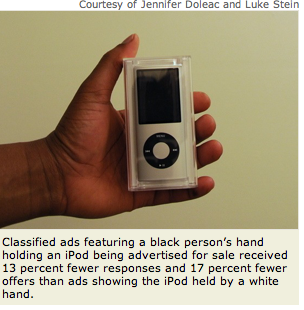Want to Stand Out in an Interview? You Already Do!
There are few moments that are more critical in your work history than the all-important job interview. That sixty or so minutes presents you with the opportunity to:
- Make a lasting impression on a one-on-one basis.
- Describe, defend, and promote your employment history
- Showcase your verbal skills and your adeptness at responding to complex questions.
- Prove you critical sales skills while in the process of “selling yourself.”
“Critical” is a fair word here because you only get one opportunity, maybe no more than an hour to do this and separate yourself from the crowd of applicants that are being interviewed for the position. You must use this opportunity to “sell yourself” while you scale the mountains of questions that the interviewer or interviewers might have for you.
How to Stand Out?
So in the midst of this, your objective is to not only answer all of the interviewer’s questions, showcase your knowledge of the sales process and your product/industry acumen, but also to stand out from other applicants. Frankly, if you are a Black sales professional, you already stand out! You have selected a career that is challenging, measurable, and rewarding. It is not the career that is the preference of the lighthearted. This role is normally relationship-based, requiring an investment of time and effort in the cultivation of deep enduring relationships with buyers of all backgrounds and origins. Not everyone can do it, and most would not make it to the interview stage, but you are there. Even the buyer that considers himself/herself color-blind recognizes that you’re an anomaly in the position. Now the good part is that you are a “good” anomaly in that role. I am serious in saying this. Absent prejudice, the good buyer is looking for some change or variation from the norm as well. Here is your golden opportunity. Even some of the most mundane issues about you are new ground for a customer from a different social and racial background. Questions will flow in search of information about the following:
- How did you get in this business?
- What is your background?
- Where did you go to school?
- Did you play sports?
- Numerous other general interest questions
These questions only lead to more inquiry. These questions, as banal as they may seem, happen because there is an informational divide in America. That informational divide then serves as a “curiosity chasm” as well. No one is going to go into your community to satisfy their curiosity as to how someone so different from them lives and thinks; yet if you come into their office, and hold conversation, everything is game. Whether you hale from the heart of the ghetto or your state’s most affluent suburb, the curiosity is the same. You can stand out in this positive way, and there are some things that you can do to make this even better:
- Be personable and inviting without getting too personal.
- Know your story and its fine points. You have license to discuss only what you want made public (because it will be public).
- Always tell the truth (Black Sales Journal 6/30 – Always Tell the Truth). The truth, in the light of its novelty to others is quite enough.
- Know what has made you strong and durable, and …better.
Now, when you know these well, you can begin to weave them into your story as opposed to “tell” them. You might want to give that comment some thought. You are the expert on you, and that cannot be denied. Do you know how to tell your story in a factual, yet illustrative way that captivates and informs? If you practice these points, you will gain proficiency in doing it, and will benefit from it.
The Value of the Icebreaker
In Black Sales Journal I always speak of the strength of conversation in building a successful relationship. You are less trying to build a successful relationship during the interview than trying to construct a gateway; there is invariably a brief moment that is the “icebreaker”. This is not a long interlude, yet a skilled interviewer will use this time to get to know something about the person that he/she is interviewing. Here is where you get an opportunity to showcase “YOU.” During this time, most interviewers would not approach a subject that is to intrusive, yet will ask you a question like: “What made you decide to get into sales?” or “What convinced a bright looking guy/lady like you to go in to equipment sales?” I am sure you have been asked a question like that before. That is the icebreaker, and it is without doubt that is not the question he/she wanted to ask, yet it is the evidence that someone is curious about you, your motivations, and your background.
Remember…Be Personable…
Black sales professionals with tenure in sales have experience in relating their story. There is no doubt that regardless of whether you are male or female, they want to understand more about you. You can move them from wanting to understand more about you to the point of fascination by disclosing some tidbits of information although never compromising personal information you want to protect. Remember bullet one above. “Be personable and inviting without getting too personal,” serves as a good motto. Although interview sessions can be tedious, remember that being interviewed by someone who is interviewing five others is tedious work on their part as well. It is made more interesting by someone who has a personality, and has points of interest that would probably attract a buyer as well.
You can be that someone.
Master the relationship.
 August 7, 2014
|
Posted by Admin9!
August 7, 2014
|
Posted by Admin9!

 Categories:
Categories:  Tags:
Tags: 


Your Comments